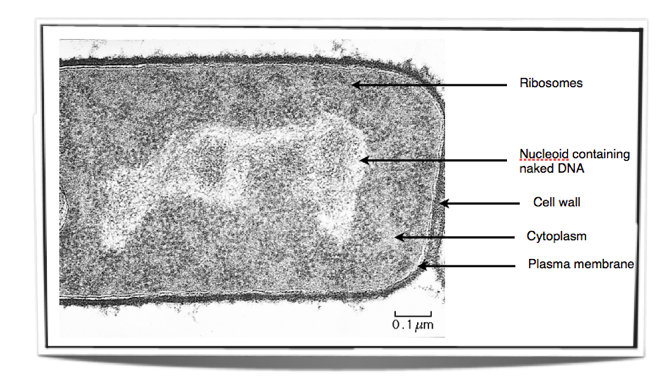E. coli is a common type of bacteria that can get into food, like meat and vegetable. E. coli is short for the medical term Escherichia coli. The strange thing about this bacterium is that it normally lives inside your intestines, where it helps your body break down and digest the food. However, once it leaves your intestines, it becomes an illness called E. coli infection.
This is a 3D model of E. coli. It is an example of a prokaryotic cell.
This is how the diagram should look like in 2D without annotations.
2.2.2 Annotate the diagram from 2.2.1 with functions of each named structure.
The size of an E. coli is around 10 micrometer.
Cell wall - protects cell from rupture caused by osmosis and possible harm from other organism.
Nucleoid/Naked DNA - store of genetic information. a single circular chromosome of about 4000 genes
Ribosomes - Site of protein synthesis
Plasma Membrane - A barrier across which all nutrients and waste product must pass. Controls the transfer of substances in and out of the cell.
Flagella - Bring about the movement of the bacterium
Cytoplasm - Site of the chemical reactions of life/Site of metabolic activities
Pili - Enable attachment to surfaces and to other bacteria.
2.2.3 Identify structure from 2.2.1 in electron micro-graphs of E. Coli.
From an electron micro-graph, be sure to note the cell wall and plasma membrane first. Those two are easy marks. The nucleoid containing naked DNA would be in a lighter patch within the cytoplasm. Be sure to add in the ribosomes which are little dots in the cytoplasm.
2.2.4 State that prokaryotic cells divide by binary fission
Binary fission is the form of asexual reproduction in single-celled organisms. This is when one cell divides into two cells of the same size. This binary fission is used by most prokaryotes. This process results in the reproduction of a living cell by division into two equal or near-equal parts.
Note: Mitosis is not the same as binary fission.




沒有留言:
張貼留言